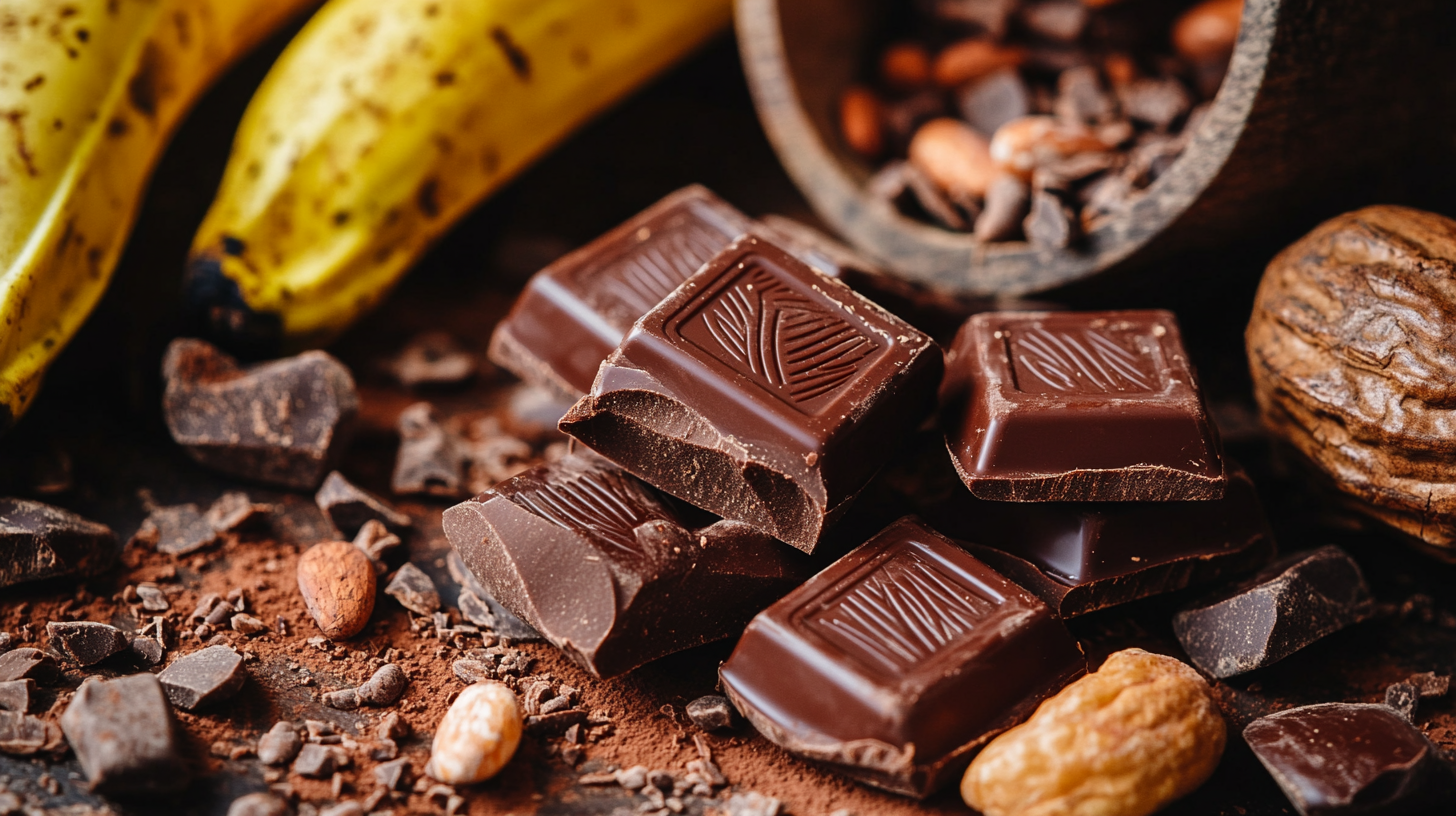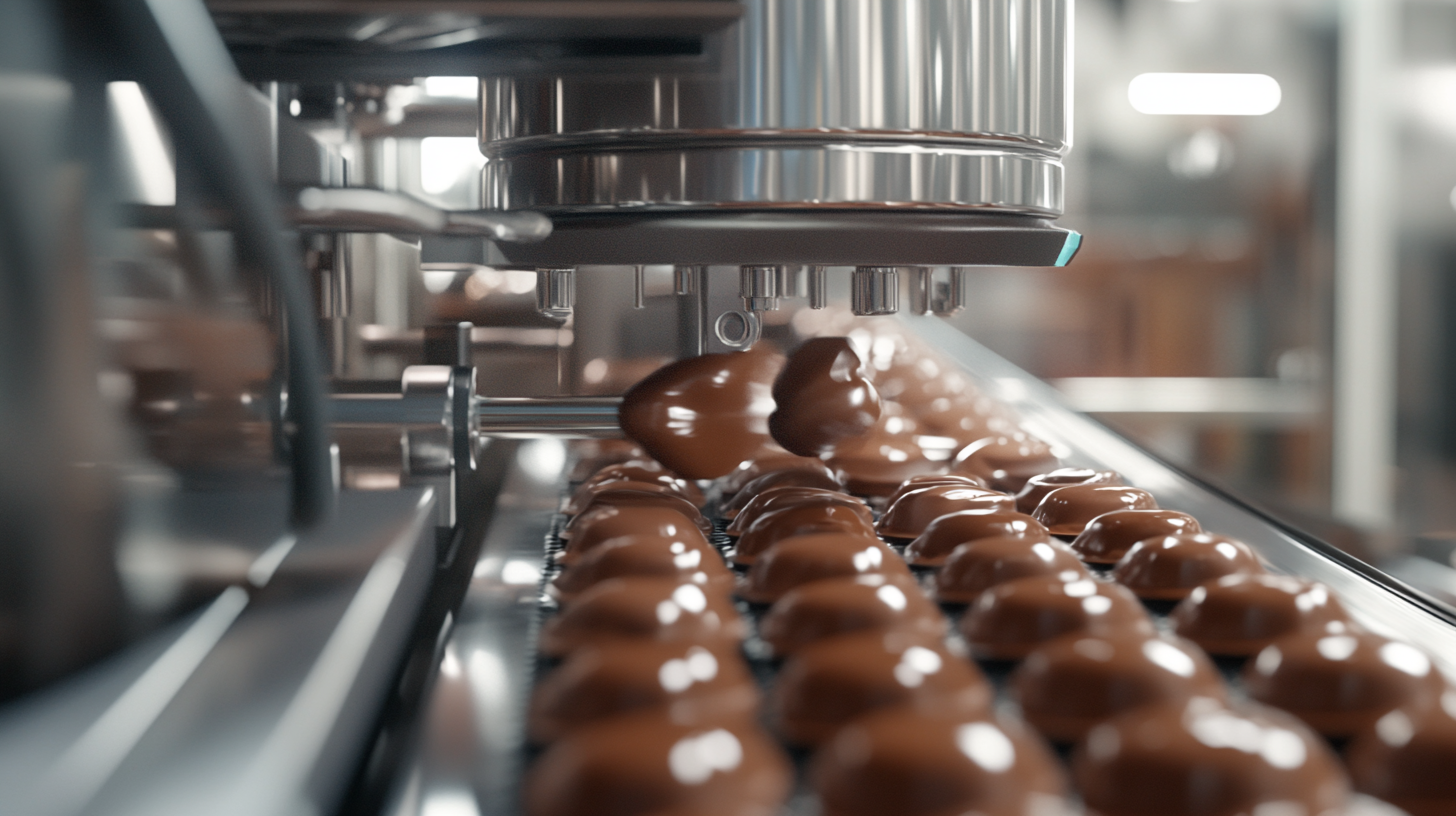The chocolate industry is nearing a huge revolution when we talk about the year 2025, as it will undergo a transformation with the help of advanced technology and innovations in machinery. It has been one of the major reports, announcing that the global chocolate market is expected to be worth USD 160 billion by 2025, according to a CAGR of 4.5% for the period from 2020 to 2025. This development is due mainly to "macchina del cioccolato," or chocolate machines, which will be increasingly efficient, with a high output of quality production. The demand for specialty chocolates and artisanal products places a high premium on machinery precision and adaptability to meet varied consumer preferences.
Chocolate machinery innovations are significantly changing sourcing trends across the globe as they increasingly respond to manufacturers' demands to optimize production processes. Reports have noted that the two key aspects of new trends are automation and smart technologies, allowing producers to increase productivity while looking at sustainability across the supply chain. In addition, there is rising consumer awareness about ethical sourcing, which means the machines used in the making of chocolates should satisfy tight environmental standards. All these trends come together to mark an important new phase of how chocolate is sourced, manufactured, and consumed into a future where quality coexists with sustainability.

Automation raises the bar on the industry and converges the operations toward efficiency and consistency and as a solution against the growing demand on the global front for high-quality products. Automation and machine processing have taken the chocolate industry by storm towards attaining lean production, that is, from bean to bar processing throughout the entire chocolate manufacturing process. Advanced robotics are capable of performing very intricate activities such as sorting, roasting, and tempering with extremely high accuracy, thus saving on labor and human errors. Manufacturers can also monitor and adjust their production systems with the help of smart technology in real-time, ensuring optimal flavor profiles and textures. Automation does much more than improve the efficiency of production processes; it also drastically changes the trends of sourcing in the chocolate industry. Businesses can now use automated systems for the processing and analysis of vast amounts of information to understand how supply chains might be improving efficiencies and sustainability practices. This places a company in a better position to make good sourcing decisions based on high-quality cocoa beans and with minimal environmental impact. Adoption of automated systems also curtails and supports greater transparency in product origin and information for consumers. Looking ahead to 2025, it isn't automation in chocolate production that matters as a buzzword-it's going to be a real necessity. Heightening demands of consumers in the world market only aggravate the need for chocolate manufacturers to embrace these technologies or risk being left behind. It's almost the future of chocolate machinery-towards industrializing in production but more responsible and sustainable in attitude vis-ã-vis modernity and taste.

Facilitated by the continual change experienced in the chocolate industry, much importance is being given to sustainable developments in manufacturing machinery for chocolate production. Thus, an increasing number of manufacturers are coming under pressure from consumers and legislators to practice eco-friendlyness. Innovations in energy-saving, waste-using, and renewable materials machinery are not only friendly to the environment; they are also good for the companies that are trying to better their sourcing practices worldwide by according with sustainability objectives.
Recent innovations like energy-saving tempering machines and biodegradable packaging systems towards the direction of developing machines that directly focus on the environmental mandate most specially geared towards cocoa and chocolate production. These systems enable a manufacturer to reduce his carbon footprint while still being able to produce high-quality outputs that will be sought out by the greener consumers. The integration of sustainable machinery thus makes a company not just compliant but quite competitive in a market rapidly changing due to global complexities in sourcing.
Indeed, the partnership of machinery manufacturers and chocolatiers is important in motivating innovation. They are going to be sharing more reasons for developing a machine specification that meets the demands of their environmentally friendly practices while working together to discuss the challenges they face in sourcing sustainable ingredients. The emphasis on sustainability in chocolate machinery is going to be a trend, but it is a far more broad sweep worldwide-graft and shifting demand concerning how production must match where the consumer values and expectations across the globe really are in terms of ethical production.

These innovative technologies have brought new life to bean-to-bar operations into the future anticipated for 2025, particularly. With the development of new machinery, the trends will undoubtedly disrupt the manufacturers' global sourcing practices as they make operational improvements and increased product quality in processing chocolate. Automation and smart technologies will not only enhance the speediness of operations and production, but they will also enhance traceability in the sourcing of raw materials-critical for high quality chocolates-from the bean to the bar.
Today, it is the retention of high-end advanced technology by companies that highlights the emerging potential of the industry in the coming years. It is this synergy that integrates much of the technology across sectors, including making machinery for chocolates containing all AI solutions to provide sync capabilities for iceberg mold production schedule optimization and supply chain logistic solutions. This future-proofing is not simply a token of compliance to remain relevant in a digital world; rather, it brings to the table enabling new possibilities toward turning a more secure and responsive supply chain into one that finds itself adapting to the consumer's increasing needs for visibility and ethics.
With emerging cutting-edge technologies, businesses engaged in bean-to-bar solutions now seek partnerships with technology innovators to usher in innovations. These improvements in the future envisage the stars of innovation and are expected to make chocolate manufacturers the world's leaders in setting future benchmarks on quality and sustainability so that what is produced does well with today's ethically conscious consumers. The future of these technologies is exciting because their effects will be felt for most sourcing trends around the world. Chocolate craft will welcome a new revolution.

Hence, in the ever-changing chocolate-making scenario, customization seems to be the driving trend in this machinery segment that is always looking for situation-adaptive features in relation to the various products in its immediate offing of gourmet chocolates. The market is starting to prefer flavors and forms that are unique, and machinery that adjusts to production changes very fast and efficiently. Gearing for the flexibility also serves the more demand for a personal touch in chocolate production within robotic advancements and automation technology innovations, yet there is respect and consciousness of the quality of chocolate and efficiency that technology would still bring.
What about recent flexible robotics trends that offer another gamut for custom-made machines in chocolate-making machinery? These serve as time savers where producers can really shift through the preparation of stuff in a mechanical configuration, offering the gifts of two ends of the chocolate spectrum simultaneously: those of artisan and mass production. When companies set their modular systems to work, they achieve a prospect that is cost-effective and still flawless in production output at large, enabling the manufacture of customizable designs suitable to any market, apart from all other bulk orders.
The principle that accompanies this module concept does very well for the personalization initiatives of chocolate manufacturers. Using the best combination of robotics and additive manufacturing technology, companies can come up with product concepts taking into strict consideration consumer preferences. Such capability is a good advertisement to product diversity and reinforces manufacturer reputation as nimble entrants amid a competitive world market. By 2025, the blending of technology with personalization in chocolate machinery will ensure a new expression of global sourcing trends and reconceptualize consumer experiences.
Year after year, the chocolate world sees new advancements above every other industry, with AI and other data analytics involved. In 2025, changes in source trends will make manufacturers need to use these high-technology tools in achieving superior supply chain efficiency to obtain productivity that might never before be thought of as possible, along with incredible transparency. Producing companies can now adjust sourcing strategy as data are produced in real-time, geared towards the most efficient purchase of superior quality ingredients minus the costs that enter the manufacturing line.
AI algorithms play a central role in forecasting demand and controlling inventory so that the chocolate manufacturer is capable of reacting swiftly to changes in the market. Predictive analysis can identify models of consumer behaviour and favourites that help the companies to determine manufacturing schedules accordingly. This makes the use of scrap lesser; it improves the overall reactive property of the supply chain. Moreover, data-backed insights enable producers to make wise decisions about sourcing from sustainable farms, which is increasingly becoming the norm for today's eco-aware consumers.
Such that the chocolate manufacturing process is monitored in real-time using IoT (Internet of Things) devices as attached to the raw material and as part of production machinery. Thus, this integrated system enables the control of quality and immediate corrective manufacturing action to minimize the downtime as well as increase the efficiency. The chocolate industry will soon be running towards 2025 towards these high-end technologies, enhancing its supply chain dynamics significantly and setting new benchmarks for global sourcing norms.
Utilizziamo i cookie per migliorare l'esperienza utente. Per maggiori informazioni, consulta la nostra Cookie Policy.